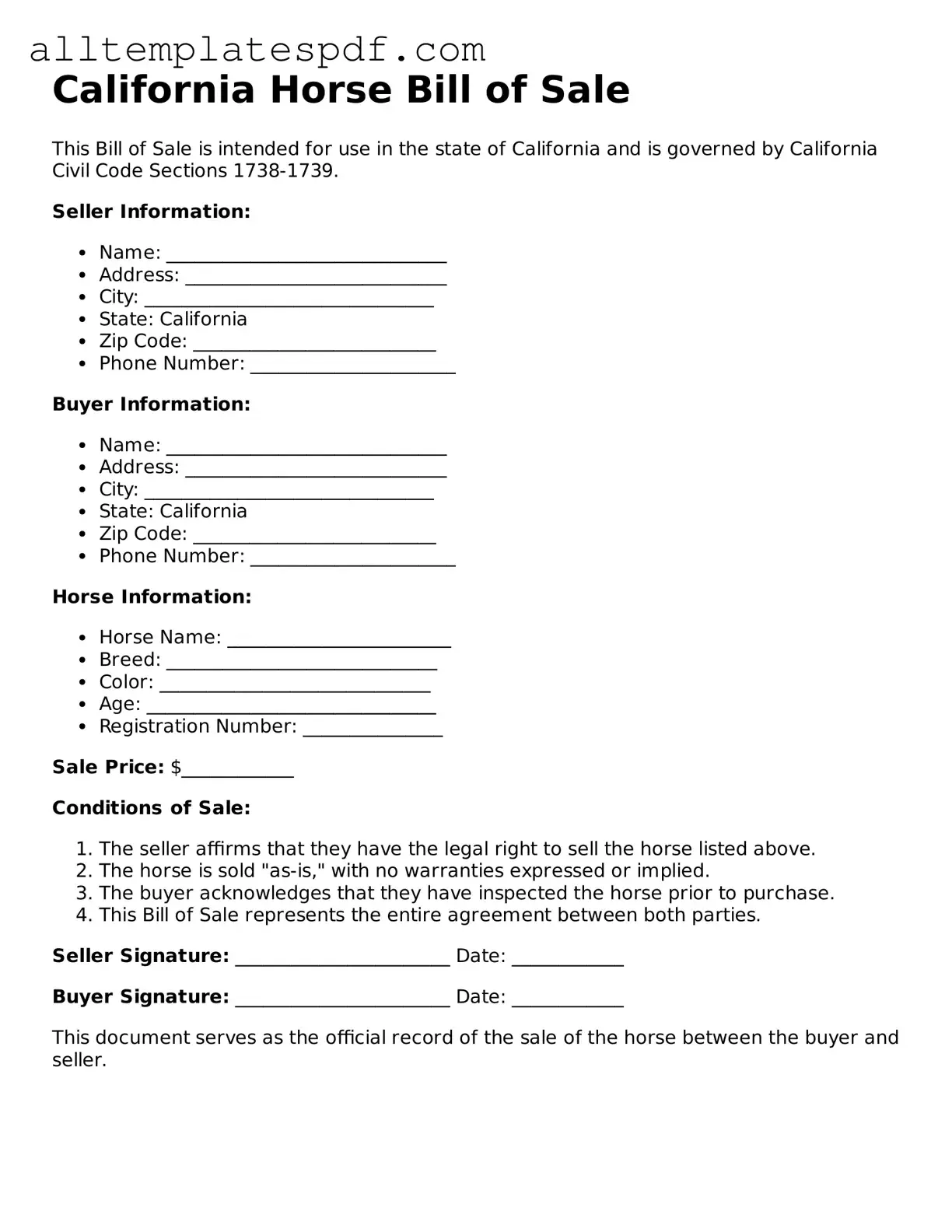Filling out the California Horse Bill of Sale form can seem straightforward, but many people make common mistakes that can lead to complications down the road. Understanding these pitfalls can save you time and stress. Here are ten mistakes to avoid when completing this important document.
First, many individuals forget to include the horse's identification details. This includes the horse's name, breed, age, color, and any identifying marks. Without this information, it becomes challenging to verify ownership or resolve disputes later on.
Another frequent error is neglecting to specify the purchase price. While it might seem obvious, not listing the price can lead to misunderstandings between the buyer and seller. This detail is crucial for both parties, especially for tax purposes.
Some people overlook the importance of including the date of sale. This date is essential as it marks the official transfer of ownership. Without it, there could be confusion about when the transaction took place, which may affect liability and ownership rights.
Additionally, many forms are submitted without the signatures of both parties. Both the buyer and seller must sign the document for it to be legally binding. Failing to do so can render the sale invalid, creating potential legal headaches.
Inaccurate or incomplete contact information is another common mistake. Buyers and sellers should ensure that their addresses and phone numbers are correct. This information is vital for any future correspondence or if issues arise after the sale.
Some individuals forget to include any additional terms or conditions of the sale. If there are specific agreements regarding the horse's health, training, or care, these should be clearly stated in the bill of sale. This clarity helps prevent disputes later on.
Another mistake is failing to retain copies of the completed bill of sale. Both parties should keep a copy for their records. This documentation serves as proof of the transaction and can be crucial if questions about ownership arise in the future.
People also often neglect to check for errors in spelling or numbers. A simple typo can lead to significant complications. Double-checking all entries can save a lot of trouble later on.
Moreover, some sellers may not disclose any known issues or health problems with the horse. Transparency is key in any sale. Failing to disclose such information can lead to legal issues if the buyer feels misled.
Finally, many forget that the bill of sale is not just a formality; it is a legal document. Understanding its significance and taking the time to fill it out correctly can prevent future disputes and ensure a smooth transition of ownership.
